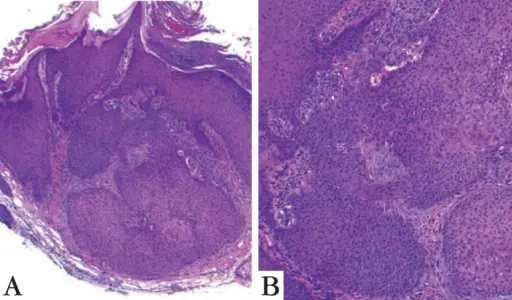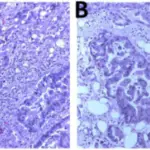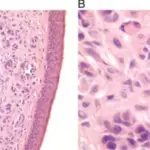Cowden syndrome is also known as multiple hamartoma syndrome.
What is the Pathology of Cowden Syndrome?
The pathology of cowden syndrome is:
-Etiology: The cause of cowden syndrome is mainly by the mutation of the PTEN gene and can be familial.
-Genes involved: Mutation of PTEN tumor suppressor gene.
-Pathogenesis: The sequence of events that lead to cowden syndrome is a result of mutation of the PTEN gene which is responsible for allowing cell death to be inhabited and there is the excess accumulation of the cells hence causing cowden syndrome.
-Morphology: The morphology associated with cowden syndrome shows distinctive clear, glycogenated, presence resembling the outer root sheath to the hair follicle.
-Histology: The histology associated with cowden syndrome shows lobules bound by a condensed eosinophilic membrane.
How does cowden syndrome Present?
Patients with cowden syndrome typically are affected equally but the type of cancer that may arise depends on the sex of the patient and the age-onset is from birth up to 46-years-old. The symptoms, features, and clinical findings associated with cowden syndrome depend on the system-affected oral lesions, cutaneous facial papules.
How is Cowden Syndrome Diagnosed?
Cowden syndrome is diagnosed by physical exam and history taking genetic testing,
How is Cowden Syndrome Treated?
Cowden syndrome is treated routine cancer screening, self-examination, and surgical care and long-term monitoring.
What is the Prognosis of Cowden Syndrome?
The prognosis of cowden syndrome is good if detected early.



